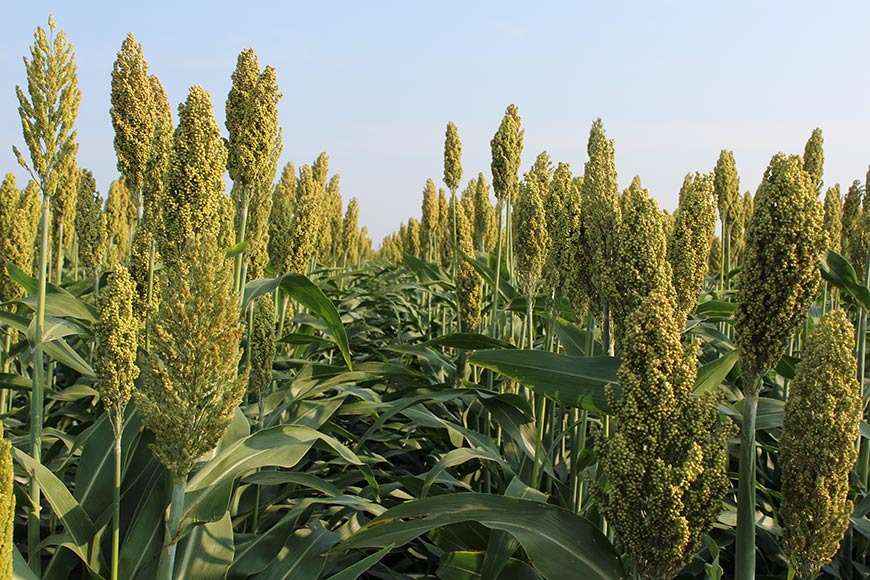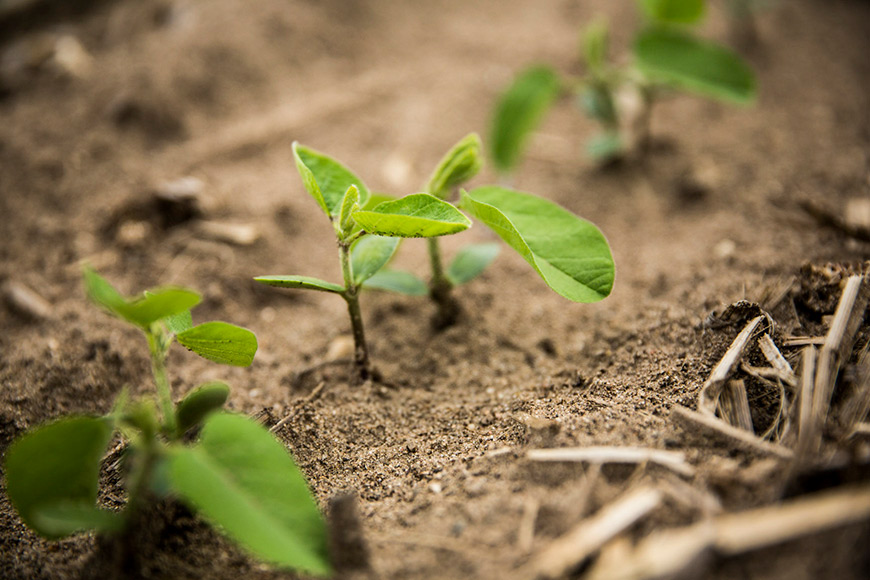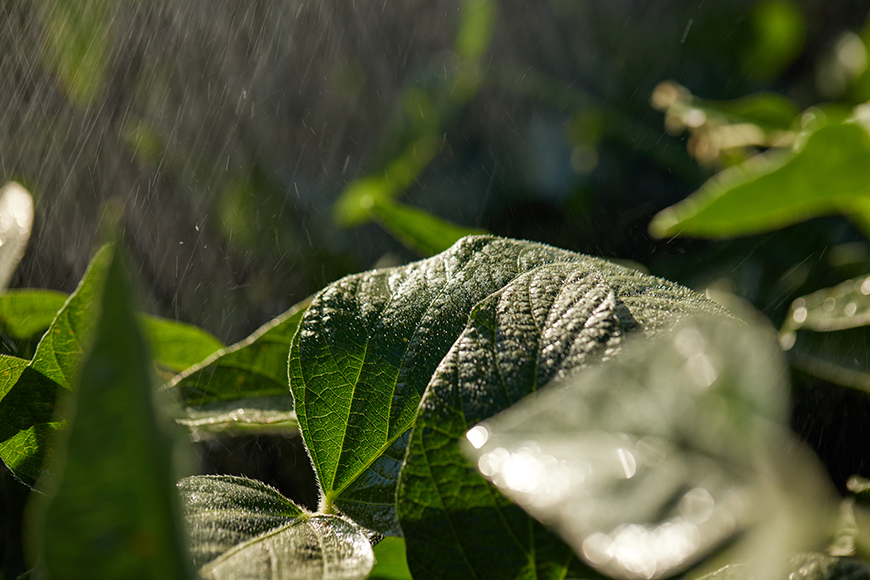Considerations for Choosing a Sorghum x Sudan Variety for Feed

If you have challenging, moisture-stressed ground and a hot climate, you farm in the sweet spot for sorghum products. Since sorghum is about 30% to 40% more water-use efficient than a corn plant, growers in hot and dry environments common in the West and South can potentially get equal to or better yields from sorghum.
Emergency forage is another common reason for using a warm season annual like sorghum for a forage crop in many locations. Challenging spring weather that doesn’t allow timely planting of corn or winterkill on other perennial crops such as alfalfa may also lead to the need for sorghum to save the day.
If you do plant sorghum for feed or are interested in starting, there are several factors to consider when choosing a variety.
Nutritional and yield goals:
Do you want to go all-out on achieving high tonnage to have a large supply of fiber on hand? Or do you want forage with a high level of crude protein and excellent digestibility? Many growers find it optimal to hit a happy medium and achieve both good quality and good tonnage.
When looking at high-tonnage material for a large pile of fiber, growers will often consider a photoperiod sensitive variety, which does not go into a reproductive stage until daylength approaches 12.5 hours. This allows for season-long growth and maximum tonnage, as found in CROPLAN® Greentreat® 1923, which also includes a brown midrib (BMR) trait to help maintain quality in an extended cutting window.
If you’re looking for a higher-quality feed pile with improved fiber digestibility and higher crude protein (CP), you should lean toward cutting the crop 40 to 50 days after planting and again every 30 to 40 days throughout the season. This encourages new growth, which is higher in digestibility and helps maintain high CP values. Greentreat 1531, Greentreat 1731, Greentreat 1741AT (a new variety that is described in more detail below) and Greentreat 1923 can all be used in this type of system. If weather becomes an issue and cutting timing is altered, try to get the crop cut prior to boot stage as the flag leaf appears to maintain the best quality. Every day that follows means additional loss of forage quality.
Livestock consumption:
Are you feeding sorghum to lactating dairy cows, feedlot cattle, heifers or other animals? Different nutritional requirements will dictate to some degree which products you should consider. Generally speaking, brachytic dwarf BMR products have the highest quality, which would be significantly affected if they’re harvested earlier on a multi-cut program. These would most likely be used in diets for animals that need better fiber digestibility and have higher nutritional requirements. More conventional products will be high in fiber and less digestible, limiting energy and weight gain, and most often used for dry cows and heifer development in dairy situations.
Potential for insects and disease:
A few to keep in mind are sugarcane aphids, anthracnose, and fusarium, as well as any others that might be an issue in your geography. Check with your agronomist to confirm that the sorghum variety you choose offers needed protection. Most varieties today have been developed for use across wide areas of the country, so disease tolerance to anthracnose is improving every year.
Storage methods:
Do you want to store your sorghum in dry round bales, as wet wrapped baleage, or as silage in a bunker or bag? Or do you want to graze and bale it, graze and chop it or graze it only? Sorghum is generally easier to store in dry bales if you use a brachytic dwarf BMR variety like Greentreat 1531, Greentreat 1731 or Greentreat 1741AT. These will have a higher leaf-to-stem ratio and a quicker drydown for baling. If sorghum is going into a wrapped baleage or as silage in a silo, bag or bunker, it really doesn’t matter what product you use, as it will not have to dry significantly to get harvested.
Harvesting equipment:
What type of harvesting equipment are you planning to use and will you bale, chop, graze or stockpile your sorghum in the field? Variety selection is less reliant on equipment. If you have “haying equipment” and you intend to do dry baled hay, then choose a variety with a smaller stem and higher leaf-to-stem ratio so it will dry quicker.
If the product is being sold:
Tonnage versus fiber content, storage method and the type of animals that will be consuming the feed are all factors in bringing sorghum to market. If you are in a market where you can’t get paid a premium on quality, you need to strive for tonnage. Capturing a quality market allows you to plant premium products and extract the value.
New variety for 2020:
CROPLAN seed will introduce a new sorghum variety for spring 2020 planting: Greentreat 1741AT. This is a brachytic dwarf BMR sorghum x sudan variety with sugarcane aphid tolerance. If you farm in an area of the United States where sugarcane aphids have negatively affected plant health, yield and harvestability, Greentreat 1741AT provides an option to protect the plant without the initial expense of an insecticide. This tolerance was accomplished with conventional plant breeding, so it is in the plant; you don’t have to rely on application timing and efficacy of an applied insecticide. WinField United has been evaluating Greentreat 1741AT through on-farm trials and we are excited about the potential it holds.
Even though an early frost in 2019 affected sorghum seed production in the heart of the Texas seed production area, CROPLAN seed was fortunate to already have its sorghum seed crop harvested and in-house. As a result, CROPLAN seed has an adequate supply of sorghum seed for 2020 planting. Talk with your local agronomist today about the advantages of planting sorghum to see if it’s a good option for you.
All photos are either the property of WinField United or used with permission.
© 2019 WinField United. Important: Before use always read and follow label instructions. Crop performance is dependent on several factors many of which are beyond the control of WinField United, including without limitation, soil type, pest pressures, agronomic practices, and weather conditions. Growers are encouraged to consider data from multiple locations, over multiple years, and be mindful of how such agronomic conditions could impact results. CROPLAN® and WinField® are trademarks of WinField United. Greentreat® is a trademark of Land O’Lakes, Inc.





